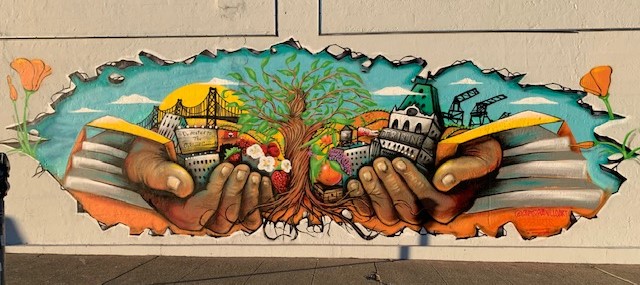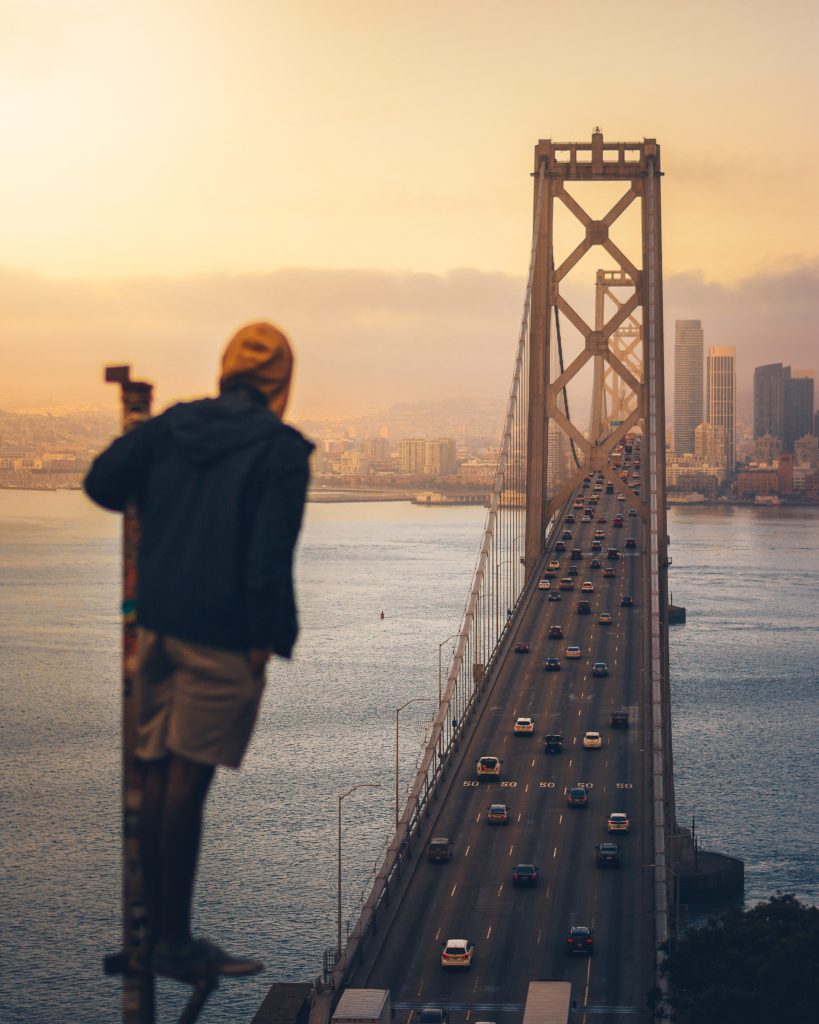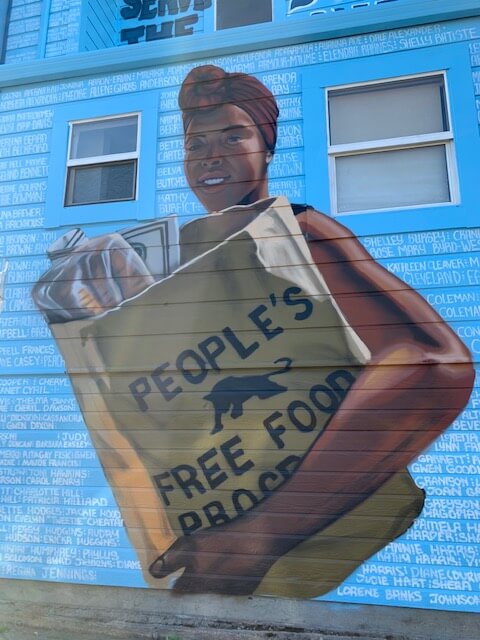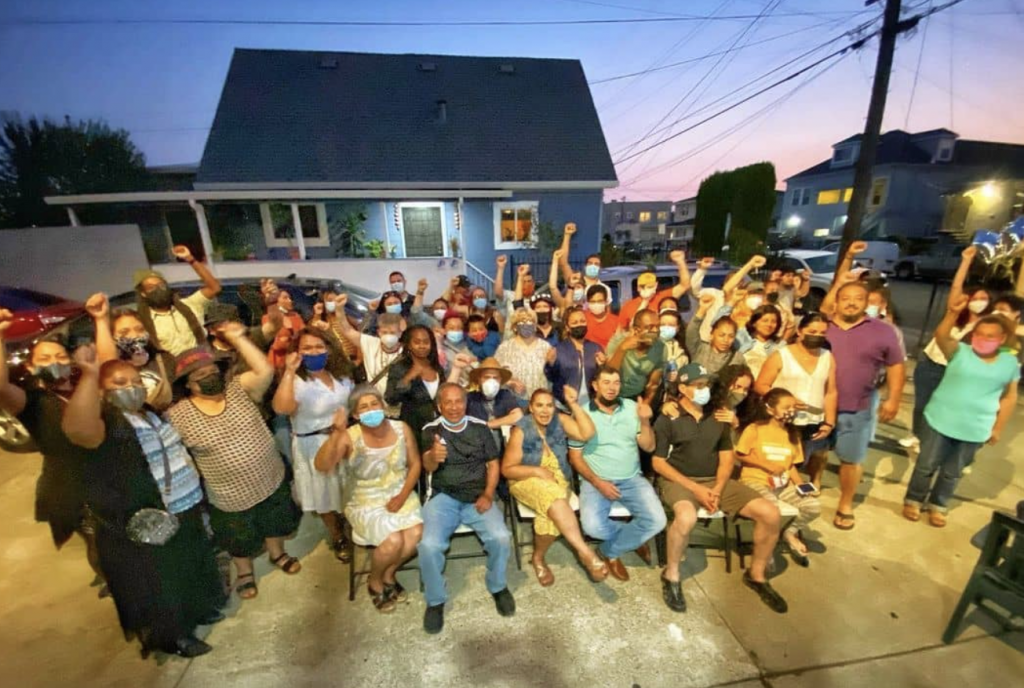
The Bay Area has long been lauded as a place of progress, diversity, and new ideas. From jazz to flower children, the Black Panther Party to the tech boom, the Bay Area remains on the cutting edge of progressiveness. The Bay Area has always been ahead of its time – pushing, pulling, and shifting the consciousness of the region and even the country like the giant tectonic plates it sits upon. It draws people from around the world with diverse backgrounds to this golden city, all looking to become a part of the next “big thing.” Yet with all the progress, there remains a constant struggle to maintain the culture and community that has sustained it for years. And just as the Great Earthquake of 1906 unexpectantly shook the Bay Area to its core, the Bay Area of today finds itself in a shaky situation that if not addressed could threaten the very foundation of this amazingly unique community.

A Tale of Two Cities
The Bay Area is a tale of two cities – literally. Oakland and San Francisco. But its tale is often told from two perspectives. While the British and the Spanish were the first European nations to set their sights on the gold coast it was the Ohlone Native Americans that had long settled in the land with around 40 tribes blending language and customs to make a thriving community.
Mexico would lay claim to the territory but that would be short-lived following the Mexican American War in which Americans seized San Francisco known then as Yerba Buena. Soon after came the Gold Rush. White gold rush settlers mined for millions, while Chinese migrants were forced into the laundry, domestic, and railroad industries. This along with many Chinese migrants having to forfeit much of their gold rush earnings to the Foreign Miner’s Tax would become the industry and wealth that helped build and grow the Bay Area and California.
Fast forward to the 1960s, when the young people in the Haight-Asbury neighborhood of San Francisco were viewed simply as tree-hugging, peace-loving flower children but would become the leaders of counterculture, protesting the war in Vietnam while Black and Chicano youth demanded Black Power.
Around this same time, Life Magazine would deem San Francisco the “Gay Capital of America.” Following the Stonewall uprising in New York City, the Bay Area became the epicenter of the Gay Rights Movement and the sight of the first Gay Pride parade.
It is amazing how much of the American story intersects in this one place. It is that same intersectionality that made the Bay an ideal place to launch a SPARCC initiative.

Power to the People
The history of the Bay Area is deeply rooted in social justice and anti-racism. They also have a long history of community empowerment. History will mostly depict members of the Black Panther Party as gun-toting Black men and women that marched on the California State Capitol. In actuality, they sought to protect those who could not protect themselves while providing community programs like free feed programs and health clinics. That history remains an integral part of the region. The seeds were already planted in the Bay, and the key was identifying those seeds and providing them with the support to blossom and thrive.
Years of discrimination, redlining, poverty, and white supremacist laws and practices threatened to tear apart this once thriving region. SPARCC understood that the Bay Area was at a pivotal crossroads where unprecedented growth is fueling dramatic changes. The powerful economic engines of San Francisco and Silicon Valley attracted over half a million jobs between 2010 and 2014, yet only 54,000 units of housing were built during this time. The Bay Area is now considered a “megaregion” with residents expanding the boundaries of the region in search of lower-cost housing. Analysis by the University of California at Berkeley found that 64 percent of low-income residents living near transit in the Bay Area are at risk of being displaced, and many have already been pushed out of the region’s central cities and away from transit and opportunity-rich communities.
At this moment of crisis, there is also a powerful consensus across the region for decisive action. Voters had already approved $12.6 billion in resources available for affordable housing production and preservation and transportation, as well as protections for existing affordable housing and renters. At the same time, state policies related to greenhouse gas reductions have mandated public and private investment in communities near transit – many of which are historic communities of color. The time was ripe for action and SPARCC answered the call.
It’s All About Trust
James Brown famously said, “I don’t want nobody to give me nothin’, open up the door, I’ll get it myself.” This spirit of self-sufficiency has always existed in the Bay Area. As huge corporations attempt to swoop in, the people in the region continue to fight to maintain their culture and way of life. To ensure that the SPARCC initiative would make lasting investments in the region, it was important to partner with organizations that were on the ground and understood what the people wanted. Bay Area for All became a critical partner in helping SPARCC identify where we could make the greatest impact.
Bay Area for All (BA4A) is aligning the work, vision, and focus of three nationally recognized collaboratives to build an equitable, healthy, and climate-wise Bay Area. Bay Area Regional Health Inequities Initiative (BARHII), Urban Habitat, and the Great Communities Collaborative, which is an initiative of The San Francisco Foundation, joined forces to advance a shared vision of community-driven development in targeted, transit-rich neighborhoods across the Bay Area. BA4A works across the region in specific urban and suburban areas, using tailored place-based strategies, and focuses on advancing community-driven development now and in the future. With the help of SPARCC, BA4A focuses on two key issues to ensure all Bay Area residents benefit for significant investments in the region:
- Preservation of existing affordable housing
- Utilization of public land for community benefits as part of the development process
To that end, SPARCC and BA4A were able to identify projects that will have a lasting and empowering effect on the region including:
National California Land Trust
NCLT’s acquisition and rehab (including health and energy improvements) of this 2-building, 16-unit project will provide permanently affordable housing for low-income, vulnerable residents of color in the gentrifying East Oakland neighborhood. Motivated to prevent displacement that would have resulted from the previous owner’s plans to convert the building rents to a level unaffordable for existing tenants, residents organized. With the assistance of East Bay Community Law Center (EBCLC) they were able to fight evictions.
The property, close to public transportation, will initially be affordable rentals. Over time, NCLT will help the tenants explore the possibility of establishing an ownership structure.
Oakland Community Land Trust
OakCLT had an immediate opportunity to acquire a tenant-occupied fourplex in East Oakland. The property units are large two and three-bedroom family-friendly, townhome-style apartments. All four existing tenants are low-income Spanish-speaking families.
The property is a 10-minute walk (about a half-mile ) from the Fruitvale BART station. Tenants of the building faced harassment and eviction pressures. OakCLT assessed the viability of making an offer to the investor-owner and met the tenants. The building owner agreed to work with OakCLT and ultimately sold them the property providing an opportunity for tenants to eventually become owners.
oices for Public Transportation
A SPARCC $5,000 microgrant was awarded to the Voices for Public Transportation coalition to support their health & safety campaign for transit riders and workers during the pandemic, identify funding to protect transit services, and advocate for equitable Coronavirus Aid, Relief, and Economic Security Act, or CARES Act, distribution.

Hope, Wealth, Ownership
The Bay Area is a beautiful place because of the beautiful people that call it home. For it to remain a beautiful place we must give the power back to the people. We must lean into the hard conversations around healthcare, climate, and housing as a human right. Just as we develop land, we must develop relationships to turn generational poverty into generational wealth. Most importantly, we must lead with love, because if there is one lesson that the Bay Area has and continues to teach us is that love always wins.